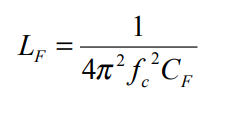Hi There,
I have designed power supply based on Ucc28064 and Ucc256301 ic based in TIDA-010015 model. It is 600W power supply and need some input on choosing these filter components. But i want to get feedback based on the component values choosed in the circuit. Corresponding values are for you reference.
Input- 85 to 265VAC
PFC circuit switching frequency minimum -40KHz
Efficiency expected- 94.5%
PF expected- 0.99
input current-7.6A
Please advise the selected components are good with respect to EMI/EMC . This components are used here for common mode and differential mode filter as per my knowledge.
C6 formula used
Cf= half of c6= 1uF
Any advise/suggestion would be appreciated.




